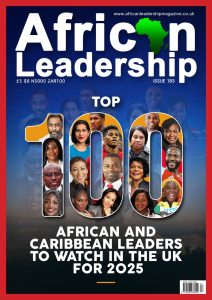Africa’s linguistic diversity, with over 2,000 languages spoken across the continent, offers distinct advantages in global multilingual education. Countries such as South Africa, Kenya, and Nigeria excel in integrating local languages with international ones like English, French, and Portuguese, thus creating a robust multilingual framework.
This diversity, combined with a focus on education reform, positions Africa as a significant player in shaping global education standards. However, language disparity remains a major challenge, particularly for children who do not speak the dominant languages of instruction such as English or French. It is estimated that 40% of the global population lacks education in a language they understand, with this issue being particularly pronounced in Africa due to its rich linguistic tapestry. For instance, the presence of numerous local languages in Nigeria, South Africa, and Kenya complicates the standardisation of educational materials.
Furthermore, approximately 43% of the 6,000 languages spoken worldwide are endangered, with a language disappearing every two weeks. The loss of a language also means the loss of its cultural and intellectual heritage.
A UNESCO review of education plans from 40 countries found that fewer than half recognise the importance of teaching children in their native language, especially in the early years. For example, in Côte d’Ivoire, 55% of Grade 5 students who spoke the test language at home mastered basic reading skills in 2008, compared with just 25% of those who spoke a different language. Similarly, UNESCO data shows that in Senegal, only 8%, and in Mali, only 2% of trained teachers felt confident teaching in local languages.
In Ethiopia, using Amharic as the primary language of instruction has left children who speak other local languages struggling academically. Similarly, in Nigeria, the use of English in schools has created barriers for students from rural areas where local languages are predominant.
The Multilingual Education Framework
Recognising the limitations of monolingual education systems, several African nations have started implementing multilingual education frameworks. These frameworks aim to integrate local languages into the education system, particularly in the early years, while still incorporating global languages such as English and French to ensure students remain competitive on the international stage.
Kenya and Ethiopia are notable for their successful multilingual education initiatives. In Kenya, introducing mother-tongue instruction in early primary school has led to improved literacy rates and better learning outcomes. In Ethiopia, allowing instruction in local languages during the early years has resulted in increased school enrolment and reduced dropout rates.
Uganda’s language policy promotes the use of local languages in primary schools, especially in rural areas where students are more likely to speak a local language rather than English. The government supports this policy by providing educational materials in local languages.
South Africa’s constitution, recognising 11 official languages, offers a model for integrating multilingualism into national education systems. By promoting the use of local languages alongside English, South Africa helps bridge the gap between home and school for many children, fostering a more inclusive learning environment.
In Nigeria, the Lagos State Ministry of Education has ensured that Yoruba is included in the curriculum from primary through to secondary school, aligning with the National Policy on Education, which supports the teaching of indigenous languages, particularly in early education.
The Role of International Organisations
Organisations like UNICEF and UNESCO play a crucial role in promoting multilingual education in Africa. UNICEF, in particular, has emphasised the importance of linguistic inclusivity for equitable access to education. Its 2016 report on language and learning highlighted that education systems should accommodate linguistic diversity, as children perform better when taught in a language they understand.
The African Union’s Continental Education Strategy for Africa (CESA) also calls on member states to advance multilingualism and language policies reflecting the continent’s diversity. By advocating for inclusive policies, CESA aims to address the barriers created by language disparities and ensure equal opportunities for all children.
Despite progress in multilingual education, significant challenges remain. Resource scarcity, including textbooks and trained teachers, hampers the effective implementation of these frameworks. In many rural areas, there is a shortage of teachers proficient in both local languages and the official language of instruction.
Nevertheless, the benefits of multilingual education are considerable. By bridging the gap between home and school languages, it can empower African youth, enhance literacy rates, and increase enrolment and retention. This approach provides students with a solid foundation in both local and global languages, enabling them to engage in the global economy while preserving their cultural identity.
Africa’s journey towards multilingual education reflects its commitment to addressing historical inequities and harnessing the potential of its diverse populations. Although challenges persist, the progress seen in countries like Kenya, Ethiopia, and South Africa demonstrates the transformative power of inclusive education.
With ongoing investment and collaboration between governments and international organisations, Africa is well-positioned to lead in developing a global model for multilingual education, showcasing that linguistic diversity can be an asset rather than a barrier.




